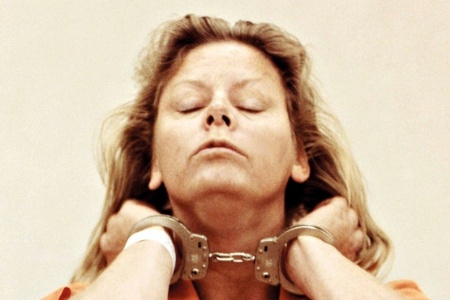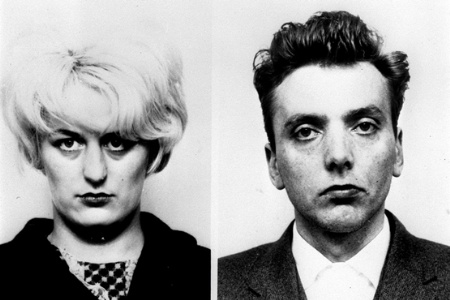Source: Eugene Doyen
Drawn to the extremes: Downing argues that murder is ‘highly codified and very historically specific’
On the publication of her new book, Lisa Downing explains to Matthew Reisz how society’s unspoken prejudices are given voice in the inflammatory discourse surrounding its murderers
The idea that murderers are entirely different from the rest of us serves a very conservative function,” says Lisa Downing. “We don’t have to worry that we might be implicated because those people are other than us and we are safely within the mainstream.”
Now professor of French discourses of sexuality at the University of Birmingham, Downing has written, co-written and edited books on critical theorist Michel Foucault, film star Catherine Deneuve and director Patrice Leconte, as well as Birth and Death in Nineteenth-Century French Culture (2007), Film and Ethics: Foreclosed Encounters (2009) and Queer in Europe: Contemporary Case Studies (2011). Coming next year is a volume of “critical essays on [sexologist] John Money’s diagnostic concepts” by her, Iain Morland and Nikki Sullivan, to be titled Fuckology.
Yet, despite this striking range of subject matter, Downing believes her career has been “underpinned by an interest in questions of how subjectivity and sexuality are understood in culture, how they are formed, what value judgements are brought to bear on so-called ‘normal’ and ‘abnormal’ varieties of them. What unites almost all of my work is a concern with interrogating that idea of ‘normal’, questioning who gets to decide what is ‘normal’ and in whose interests.”
Yet there has also been a certain change of emphasis: “I have moved from taking the ‘abnormal’ as fascinating subject matter to be prodded and poked to yield up answers towards looking at precisely the ways in which the ‘abnormal’ subject gets constituted and what that says about the social forces doing the constituting.”
We can see this shift in the move from Downing’s first book, Desiring the Dead: Necrophilia and Nineteenth-Century French Literature (2003) to the recently published The Subject of Murder: Gender, Exceptionality, and the Modern Killer.
So what drew her to such extreme material in the first place? Part of what makes necrophilia worth studying, she replies, is that it “remains in the sphere of psychiatry and medico-legal discourse and has not become a subject of politics in the way that LGBTQ issues obviously have, and practices like BDSM and sadomasochism, which have a whole group of defenders who say: ‘We are just like the rest of you, except that we like kinky sex’. It hasn’t been tamed by the assimilationist brigade.
“Necrophilia and other perversions that have death as part of their content are interesting because they literalise the fear underpinning the regulation of all non-normative sexuality…that any sexual practice that couldn’t lead to reproduction was dangerous and could lead to the downfall of Western civilisation. However, the very existence of so-called ‘sexual perversions’ reveals the lie that sexuality is utilitarian, that desire is naturally for a purpose - ie, reproduction.”
In describing her new book, Downing suggests that “people think of murder as this deep dark personal thing and I argue that it’s a highly codified and very historically specific phenomenon which comes from the aesthetic philosophies of Romanticism, decadence and later existentialism”.
Although there have always been homosexual and homicidal acts, specific cultural pressures turned acts into essences and created the figures of “the homosexual”, “the pervert” and “the murderer” at roughly the same time.

To develop her argument, Downing returns to 1830s and 1840s France to examine the “gentlemanly” murderer (and poet) Pierre-François Lacenaire and the “angel of arsenic”, Marie Lafarge. Yet she soon moves on to more familiar murderers notable for “the sheer weight of representation they have provoked”: “Jack and the Rippers who came after”; Myra Hindley; Dennis Nilsen; the client-killing prostitute Aileen Wuornos; and the “kids who kill”, such as those responsible for high-school massacres, or the death of James Bulger.
Oceans of ink have been spilled in trying to understand this grim cast of characters, but Downing is adamant that she is “a cultural critic and continental philosopher” rather than a psychologist or criminologist, and so is “not qualified to do psychiatry on these people”.
Instead of providing yet more “interpretations of their motivations or their psychology”, she explains, “I’m offering analyses of the discourses produced about them, and what those discourses say about the society doing the producing”.
What emerges, as she puts it in The Subject of Murder, is that “the historical stereotypes of the Romantic figure of the outlier, the genius- criminal, the sex-beast, or the unnatural figure of the violent woman resurge in order to isolate those individuals from the rest of their culture and to maintain them as (sometimes glamorous) monsters, but never as mirrors”.
And one of the things Downing wants us to see reflected back is how murderous acts get interpreted differently according to the class, sexual orientation and (particularly) the gender of the perpetrator.
Take the response to the Moors murders of the mid-1960s.
“Hindley and [Ian] Brady are both reviled as child killers, as the lowest of the low,” acknowledges Downing, “because children are given a special status as innocent and the most in need of protection.
“However, for a woman to kill a child is seen as infinitely worse, because women are supposed to possess those qualities of maternal instinct, ethics of care and innate nurturing protection.”
In the long history of sexual double standards this might seem like a rather minor example, but Downing describes it as “a very telling form of misogyny…It’s precisely in the way that people receive news items and cultural phenomena such as murderers that we actually see misogyny at work.”
She adds: “When people say: ‘I can’t put my finger on it, but she bothers me’ - that’s what’s of interest. It’s in areas like crime that often unspoken prejudices are allowed to be voiced, because who’s going to defend Myra Hindley?

“And I don’t want to defend Myra Hindley, but I do want to show how the figure of Myra Hindley reveals virulent misogyny that in other spheres would probably be more hidden, because of the demands of political correctness, workplace regulations and all the rest of it.”
Perhaps even more compelling is the contrast between Peter Sutcliffe and Wuornos. When the Yorkshire Ripper killed 13 women from 1975 to 1980, he became a sort of local folk hero. Football crowds were heard to chant “Ripper 11, police nil”, while Jim Hobson, the acting chief constable of West Yorkshire Police, made a point of stating: “He has made it clear that he continues to hate prostitutes. Many people do. We as a police force will continue to arrest prostitutes…”
Why is it, asked feminist critic Nicole Ward Jouve, that “no women go about murdering ‘punters’, convinced they’re on a God-given mission to rid the city of its litter?” A possible exception to this rule is provided by Wuornos, who, at least at one point, defended herself in just such terms: “I feel like a hero. ‘Cause I’ve done some good. I’m a killer of rapists.”
Yet it was precisely this narrative that nobody wanted to hear.
“Where the (male) serial killer is an unlikely hero, a bad boy celebrity,” writes Downing, “the feminist warrior is not even articulable.” Commentary on Wuornos’ case, when it didn’t turn her simply into a “monster” (as Patty Jenkins’ 2003 Hollywood biopic is called), viewed her as mad or, at best, a victim of earlier abuse.
In every case, Downing demonstrates that the murderers, though hardly typical, were nonetheless symptomatic of wider social attitudes and problems that we often shy away from.
“Of course, people should be upset by acts of violence,” she concludes, “but they should also be upset by the violence implicit in systems and institutions - and not so keen to use these figures of exception to draw attention away from those larger systems of iniquity.”
Register to continue
Why register?
- Registration is free and only takes a moment
- Once registered, you can read 3 articles a month
- Sign up for our newsletter
Subscribe
Or subscribe for unlimited access to:
- Unlimited access to news, views, insights & reviews
- Digital editions
- Digital access to THE’s university and college rankings analysis
Already registered or a current subscriber?
